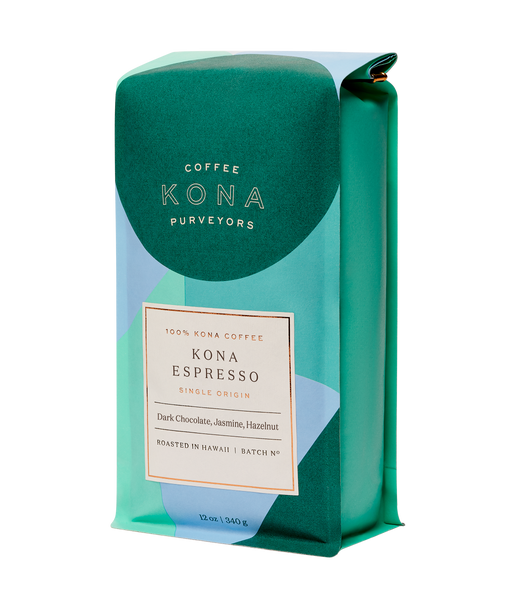Pairing Food and Desserts with SOE Single Origin Espresso
Pairing Food and Desserts with SOE Single Origin Espresso
Blog Article
Coffee Beans 101: Every Little Thing You Need to Know Regarding Espresso and Blended Coffee Beans
When it comes to coffee, recognizing the subtleties of espresso and mixed beans can transform your day-to-day mug. From the growing process to roasting methods, every action plays a function in your coffee experience.
Comprehending Coffee Beans: Varieties and types
When diving into the globe of coffee, comprehending the types and ranges of coffee beans is crucial for every lover. Arabica beans are known for their smooth, complicated tastes and reduced caffeine web content, making them a favored amongst coffee enthusiasts.
Within these types, you'll locate various regional selections, each bringing special attributes. Ethiopian Yirgacheffe provides brilliant floral notes, while Colombian beans provide a healthy flavor account. As you check out, keep in mind to pay focus to processing methods like cleaned or natural, as they can greatly influence the last taste. By acquainting on your own with these beans and their flavors, you'll elevate your coffee experience and make even more educated choices in your developing journey.
The Expanding Process: From Seed to Bean
When you check out the journey of coffee, it all begins with seed option strategies that establish the structure for high quality. From there, cultivation and harvesting play important functions in guaranteeing the beans thrive. Handling methods transform those collected cherries right into the coffee beans you enjoy.
Seed Option Methods
Choosing the ideal seeds is vital for generating top notch coffee beans, as it lays the structure for the whole growing procedure. You should start by choosing seeds from credible sources that prioritize quality and hereditary variety. Seek ranges known to grow in your particular climate and soil problems. Take note of the seed's age and storage problems, as fresh seeds have a tendency to germinate much better. When possible, select organic seeds to reduce exposure to damaging chemicals. Take into consideration the disease resistance of various selections, as this can substantially influence your return. Do not hesitate to consult with local farmers or professionals to acquire understandings into the finest seed options for your region. This knowledge will certainly improve your coffee-growing experience.
Farming and Harvesting
As you nurture your coffee seeds right into flourishing plants, recognizing the farming and harvesting procedure is vital for accomplishing the most effective taste and top quality. Begin by planting your seeds in well-draining dirt, ideally in a shaded area to safeguard them from straight sunshine. As your plants expand, maintain consistent moisture, and be conscious of their need for nutrients. Prune on a regular basis to promote airflow and healthy development.
When it comes time to harvest, search for ripe cherries, which normally turn a vivid red. Hand-picking is commonly the very best approach to guarantee only the ripest cherries are selected. Timing is essential; collecting prematurely or far too late can impact the flavor account of your beans. Welcome perseverance and care, as this is where top quality starts.

Processing Techniques Clarified
As soon as you have actually gathered your coffee cherries, the next important action is processing them to change those vibrant fruits right into the beans you'll make. There are two major techniques: the wet procedure and the completely dry process. In the completely dry procedure, you spread out the cherries out in the sunlight to completely dry, enabling the fruit to ferment and give distinct tastes to the beans. On the other hand, the wet process includes getting rid of the fruit promptly and fermenting the beans in water, causing a cleaner taste. After processing, the beans are hulled, sorted, and normally dried out once again. Each technique impacts the flavor profile, so trying out with both can help you uncover your favored mixture. Understanding these techniques is essential to enjoying your coffee experience.
Roasting Techniques: Just How Flavor Is Developed
When it pertains to toasting coffee beans, comprehending roast levels is essential to disclosing their unique flavors. Each toasting strategy impacts the scent and improves the flavor development procedure, giving you a richer coffee experience. Let's explore how these aspects integrated to elevate your daily mixture.
Roast Levels Described
Roast levels play an essential function fit the flavor account of your coffee. You'll delight in brilliant acidity and fruity notes when you select a light roast. As you transfer to a tool roast, you'll notice an equilibrium of sweetness and intricacy, usually highlighting chocolate or sugar flavors. Dark roasts, on the various other hand, supply strong, smoky characteristics with less SOE level of acidity, making them rich and robust. Each degree results from various roasting times and temperature levels, influencing the beans' chemical structure. By understanding these degrees, you can better pick a coffee that matches your taste choices. Trying out different roasts to uncover which one resonates with you, enhancing your general coffee experience and satisfaction.
Effect On Fragrance
The roast level not only affects the taste of your coffee yet likewise greatly impacts its aroma. When you pick a light roast, you'll typically discover intense, flower notes that can make your coffee odor fresh and dynamic. As the beans darken, the aroma changes; a medium roast draws out a lot more well balanced, caramelized fragrances, while a dark roast tends to include vibrant, smoky undertones. Each roasting method releases various volatile substances, forming exactly how your coffee scents. Additionally, the freshness of the beans plays an important function; fresh baked coffee releases more aromatic oils, boosting that luring fragrance. Pay interest to the roast level-- it's vital to disclosing the full fragrant experience of your brew.
Taste Advancement Refine
As you explore the taste advancement process, you'll find that roasting techniques play a crucial role in forming the preference account of your coffee. The toasting temperature and time directly influence the level of acidity, sweetness, and resentment of the beans. Light roasts keep even more of the bean's initial flavors, highlighting flower and fruity notes.
Coffee vs. Blended Coffee: Trick Differences
Espresso and combined coffee each offer distinct experiences that accommodate different preferences and choices. Coffee is a focused coffee brewed forcibly warm water via finely-ground coffee beans, leading to a rich, strong flavor and a velvety layer of crema on the top. It's often appreciated as a shot or utilized as a base for beverages like coffees and cappucinos.
On the various other hand, blended coffee incorporates various beans from various areas, developing an extra well balanced flavor account. You'll typically locate blends that highlight sweetness, body, or level of acidity, making them functional for various brewing approaches. While coffee focuses on strength, mixed coffee may supply a wider series of flavors that can alter with each sip.
Eventually, your choice between coffee and mixed coffee come down to your individual preference. Whether you hunger for a leisurely cup or a fast shock, both options have something delicious to provide.

Developing Methods: Opening the Perfect Mug
When it comes to brewing coffee, finding the right method can transform your experience and elevate your mug. Each developing method has its one-of-a-kind beauty and can greatly affect your coffee's flavor and fragrance. For example, utilizing a French press allows you to enjoy a rich and robust mixture, while a pour-over method supplies a tidy, bright mug with unique flavors.
If you choose coffee, purchasing a quality device can assist you understand the art of drawing shots. Additionally, for convenience, a single-serve covering system uses speed without sacrificing taste.
Do not fail to remember regarding chilly brew, which delivers a smooth, less acidic coffee suitable for warm days. Trying out various methods to discover what resonates with your taste buds. Each developing technique opens a brand-new world of opportunities, so put in the time to discover and discover your ideal cup. Satisfied developing!
Tasting Notes: Determining Taste Profiles
How can you genuinely appreciate your coffee if you don't know what flavors to look for? Sampling notes are your overview to understanding the complex world of coffee. Some coffees may leave a chocolatey or sugar aftertaste, while others may have an intense, tidy surface.
Take into consideration the body of the coffee, too; is it airy and light or thick and syrupy? Don't forget acidity; a bright level of acidity can include sprightliness, while a reduced acidity may provide a smoother experience. By determining these flavor accounts, you'll grow your link with each mug, making coffee sampling a delightful journey of discovery.

Tips for Selecting and Storage Coffee Beans
Selecting and saving coffee beans appropriately can substantially enhance your developing experience. Start by picking premium beans that fit your taste. Search for quality; beans roasted within the last 2 weeks are perfect. Inspect the roast day on the packaging, and buy from respectable roasters or neighborhood shops.
Once you have your beans, save them in a closed container to stop exposure to wetness, air, and light. A dark, cool place functions best, so prevent keeping them in the fridge or fridge freezer, as this can introduce moisture. Only grind the amount you need to preserve freshness; whole beans maintain flavor longer than pre-ground coffee.
Finally, try to utilize your beans within 2 to 4 weeks after opening for peak preference. Complying with these tips will certainly assure your coffee remains delicious and delightful, boosting your daily mixture to new heights.
Often Asked Concerns
The Length Of Time Do Coffee Beans Stay Fresh After Roasting?
Coffee beans remain fresh for concerning two weeks after toasting - SOE. You must keep them in a closed container, away from light and dampness. After that, their taste and scent start to lessen considerably

Can I Mix Different Coffee Bean Varieties?
Absolutely, you can mix various coffee bean varieties! Try out blends can boost tastes and create an unique preference profile. Simply make certain to balance the toughness and qualities of each range for the ideal results.
What Is the Perfect Grind Size for Coffee?
For espresso, you'll want a great work size, regarding the appearance of table salt. This allows suitable removal, causing an abundant, tasty shot. Experiment a bit to find what matches your preference best!
Just How Does Altitude Affect Coffee Bean Flavor?
Altitude impacts coffee bean flavor by influencing the development price and chemical make-up. Greater elevations result in slower maturation, which boosts level of acidity and complexity, giving your coffee a special and dynamic preference you won't neglect.
Are There Decaffeinated Variations of Coffee Beans?
Yes, there are decaffeinated variations of coffee beans. You can delight in an abundant espresso taste without the caffeine kick. Just seek "decaf" blends at your local coffee bar or specialty shop.
Coffee Beans 101: Whatever You Required to Know Regarding Coffee and Blended Coffee Beans.
When diving right into the world of coffee, recognizing the kinds and selections of coffee beans is essential for every lover.When it comes to roasting coffee beans, recognizing roast degrees is crucial to revealing their distinct flavors. Espresso is a focused coffee made by requiring warm water with finely-ground coffee beans, resulting in a rich, strong taste and a creamy layer of crema on top.On the various other hand, mixed coffee incorporates numerous beans from various areas, developing a more well balanced taste profile.
Report this page